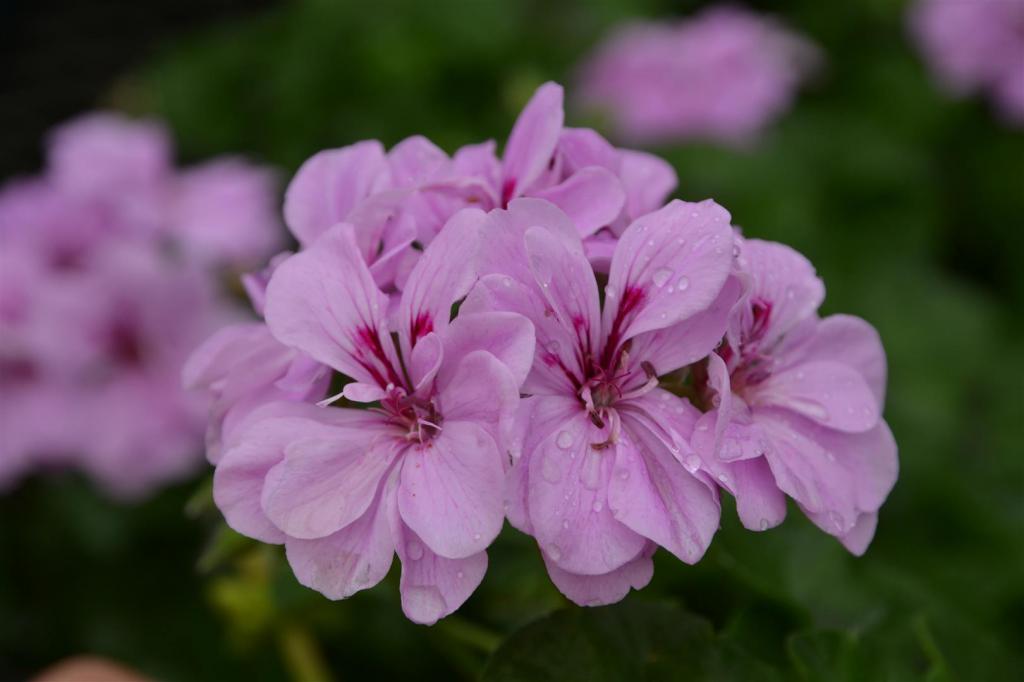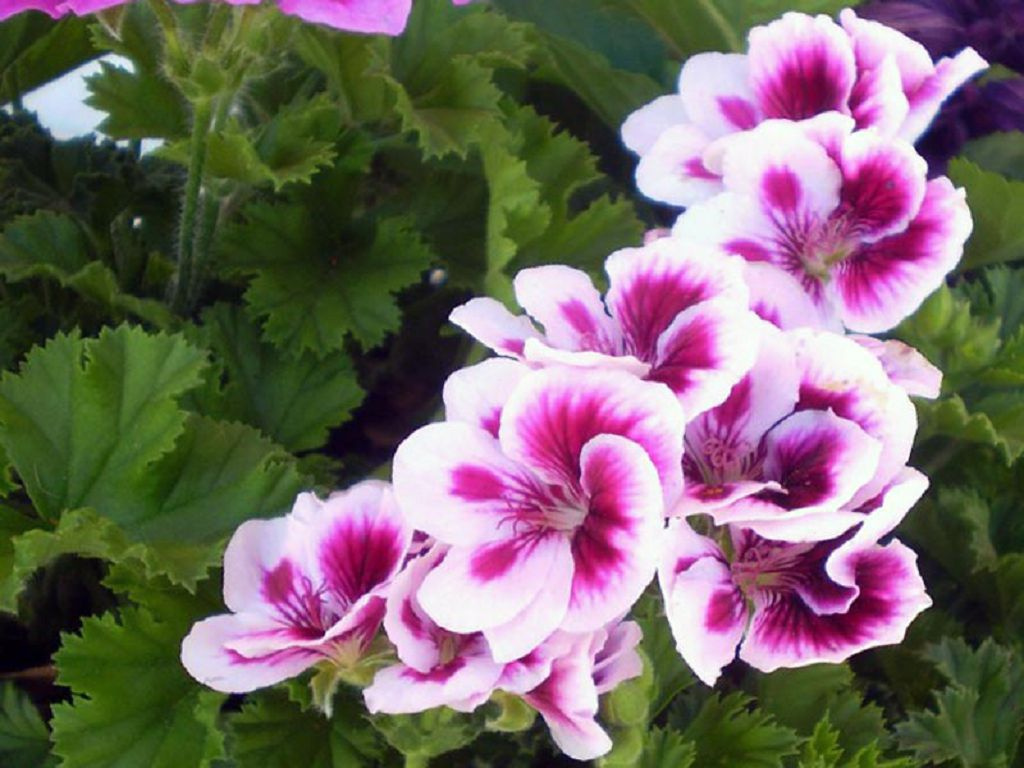Many people have a pot on the windowsill with a wonderful flower - geranium... It pleases many housewives with the fact that it is easy to grow, but at the same time it blooms beautifully. The popularity of home geranium has led to the fact that there are few apartments where this plant would not be.
The only problem with this plant is the fact that it is not geranium at all. It has a completely different name, it is a completely different species. And what really is a geranium usually grows on the street, in the wild, decorating someone's gardens and front gardens.
At one time, botanical scientists argued a lot about whether these plants are related. Pelargonium was very popular among gardeners, but for some reason they called it geranium. Clarity in this matter appeared thanks to the famous scientist Karl Linnaeus, the creator of the first classification of the plant world. He combined these flowers into one group and he was right. These two plants belong to the same group and by modern science - the geranium family.
Thus, small blue flowers that grow by themselves and that anyone can pick in a summer meadow, and lush red flowers in pots, carefully looked after by housewives, turn out to be relatives. And the wild brother gave its name to luxurious pelargonium. While this is scientifically wrong, the beauty of flowers doesn't fade away. And the fake geranium still travels through the windowsills of city apartments and private houses, delighting their owners with beautiful flowering and undemanding care.
Common features of geranium and pelargonium
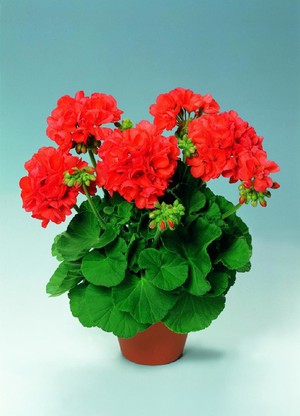 Geranium family includes 5 genera and 800 species... Geranium is the most common genus, growing in a wide variety of climates - in the temperate zone, tropics, on mountain slopes. There are up to four hundred species of this plant. Their possible colors:
Geranium family includes 5 genera and 800 species... Geranium is the most common genus, growing in a wide variety of climates - in the temperate zone, tropics, on mountain slopes. There are up to four hundred species of this plant. Their possible colors:
- Lilac,
- Red;
- Blue;
- Pink;
- Pale;
- Brown.
Breeders created a number of hybridsthat are successfully grown in gardens and parks.
Pelargonium also boasts its own colors:
- Red;
- White;
- Pink;
- Two-color;
- Lilac.
Karl Linnaeus once drew attention to the similarity of the pistils of these flowers after fertilization. They stretch out and become look like a crane or stork beak... It is no coincidence that the people call geranium a crane, and in translation from the Greek "pelargos" means a stork.
The leaves and stems of these flowers are also very similar. The stems usually grow very straight. Leaves depart from the petiole alternately and, as a rule; covered with small hairs. Also, many people note the pleasant aroma emanating from geranium and pelargonium. Both of these plants love sunny places and are well bred even by inept gardeners.
But there is a difference between species, and not only external.
How do they differ from each other
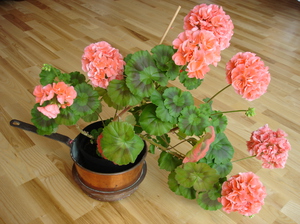 The first difference that catches the eye of any layman is luxurious royal view of pelargonium, confidently and magnificently blooming in a pot. If geranium is more like wildflowers that grow freely in a meadow, then pelargonium clearly requires more careful attention.
The first difference that catches the eye of any layman is luxurious royal view of pelargonium, confidently and magnificently blooming in a pot. If geranium is more like wildflowers that grow freely in a meadow, then pelargonium clearly requires more careful attention.
The main difference between pelargonium and geranium is its instability to cold... It grows in South America, so it is unable to survive outdoors in cold countries.Sometimes in the summer it is planted in street flower beds, but in order for the plant to overwinter, it must be moved to a warm place. Geraniums are not so whimsical.
The flowers of these two species are also different. Geranium is remarkable in that its flower is perfectly symmetrical in shape, it has 5 or 8 petals. In Pelargonium, flowers are symmetrical only along one axis. The two upper petals are large, and the lower three are smaller. Unlike geraniums, it never has blue flowers. Pelargonium flowers gather in lush inflorescences. In geraniums, they usually grow alone.
Thus, one can list the main differences between these plants:
- Cold resistance;
- Flower shape;
- Various uses in horticulture;
- Different care;
- Different appearance.
Nature, as if summing up this difference, made it so that the crossing of geranium and pelargonium is impossible.
Speaking about pelargonium and geranium, about their difference, it should be said that they have occupied their niche in decorating human life. The first grows in summer cottages, in gardens and parks, in the wilderness. The second proudly flaunts in pots, landscaping and making the interior of a simple apartment more interesting.
How to care for pelargonium
Despite the fact that pelargonium is a heat-loving plant, it is not difficult to care for it. Many years of experience have shown that follow simple rulesso that it grows and blooms all year round at home:
- Regular watering is very important;
- The plant needs light;
- It is necessary to prune the plant;
- The temperature in the room should not fall below 12 degrees Celsius.
Pelargonium will be very comfortable on the windowsill, not only due to the availability of sunlight, but also because in winter it still needs a little coolness.
Lack of lighting leads to the fact that the pelargonium stops blooming or flowers are greatly reduced in size... However, direct sunlight should be avoided. Watering should be done when the topsoil is dry, so that root rotting does not begin. The fact that something is wrong with the roots can be understood from the state of the leaves, which for some reason became lethargic and lifeless.
A small pot will do, the soil should be nutritious. Sometimes the earth needs to be loosened in order for the plant to receive the necessary oxygen. There should be a wide drainage layer at the bottom. In winter, it is not necessary to water the plant, it differs in that it tolerates a lack of moisture well.
To make the pelargonium comfortable, it needs a lot of space. Pots with neighboring green pets should not interfere with her lush bloom.
How to care for geraniums
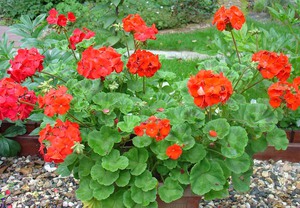 Geranium is very undemanding, for which gardeners appreciate it. She does not need top dressing, the neighborhood of weeds will not interfere with her. It is necessary to water it only if the summer turned out to be excessively dry.
Geranium is very undemanding, for which gardeners appreciate it. She does not need top dressing, the neighborhood of weeds will not interfere with her. It is necessary to water it only if the summer turned out to be excessively dry.
If you still want to decorate your front garden with this flower, then it is better to take care that the soil is cleared of unwanted neighbors, and a little top dressing, drainage and a minimum of attention will lead to the fact that geranium will delight the resident of a country house with good flowering.
Geranium has many varieties that are successfully used in horticulture. there is brown species, ash geraniums, red... All of them reproduce well both in a vegetative way, and there by seeds. However, many varieties are best purchased as seedlings. Collecting your own seeds isn't easy. The plant itself is best transplanted periodically.
If the inflorescences are removed in time, the plant will bloom longer. It is better to remove the withered parts of the geranium.
Geranium loves the sun very much, so it should be planted where the sun's rays are available. It grows well if the spring is warm and the summer is hot. Wherein in winter it does not need to be coveredbecause it tolerates winter well.
Beauty is more important than name
The history of the assignment of someone else's name by pelargonium is quite funny and will be a discovery for many flower growers. However, it is unlikely that everyone will unanimously stop calling the bright red flower in a pot on the windowsill geranium. And it will not spoil him in any way.
Geranium and pelargonium have found their application in different areas of floriculture. One lives on the lawns in private houses, the other in a city apartment. The combination of beauty and unpretentiousness will always make them popular with flower lovers.
